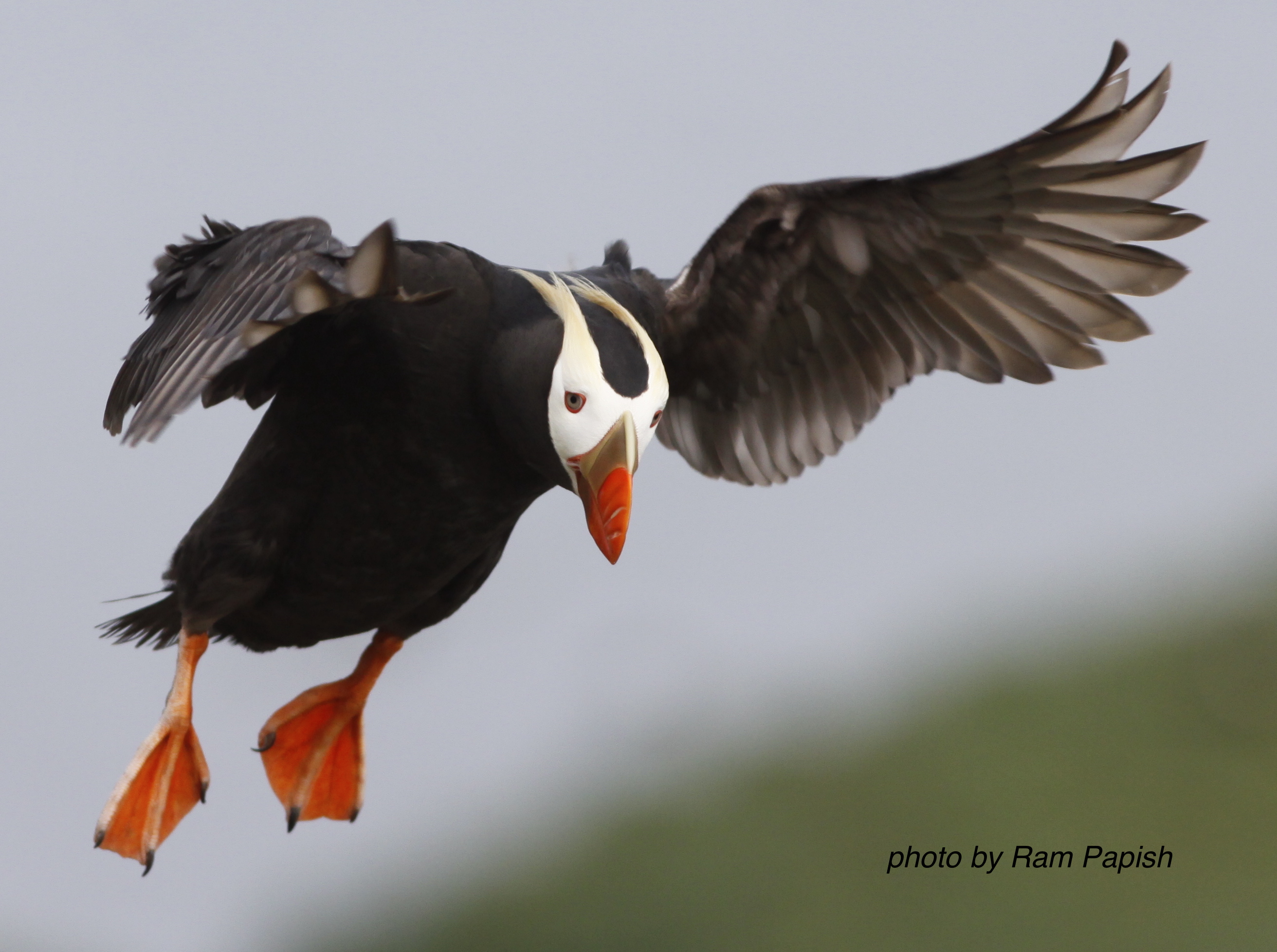Tufted Puffins spend their winters far from land throughout the North Pacific, but scientists don’t know much about their life out at sea. Over the next couple of years, we’ll be following a research project led by the Prince William Sound Science Center and funded by the North Pacific Research Board.
Biologists will use geolocators to study the migration routes and wintering areas of Tufted Puffins that breed on Middleton Island, a small island in the Gulf of Alaska.
Here’s a few facts about Tufted Puffins:
Where They Live: Tufted puffins breed on coastline and islands in the North Pacific Ocean.
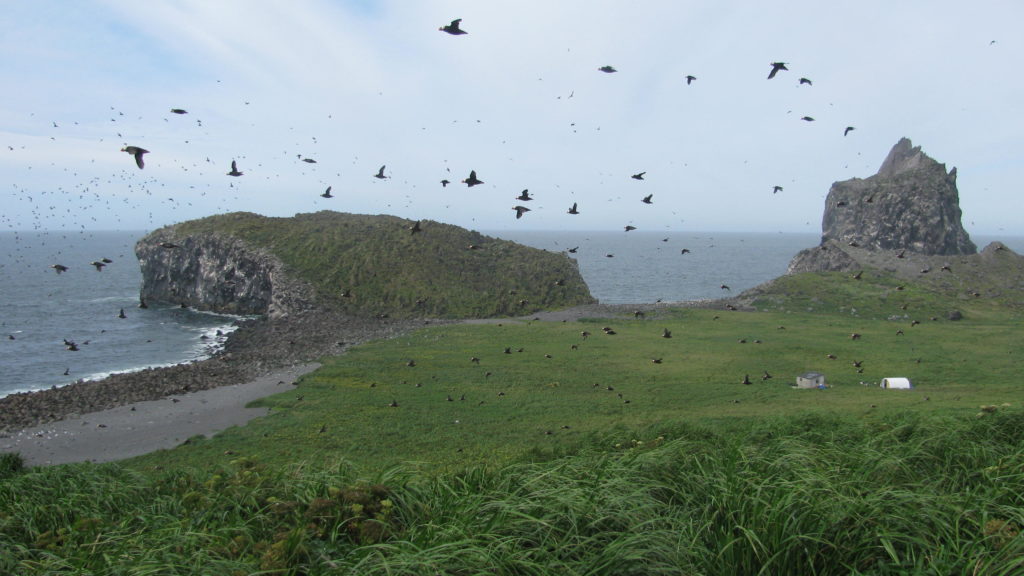
Tufted Puffin colony on Bogoslof Island in the Aleutians; photo by Ann Harding
Feeding and Diet: They eat small fish and even smaller ocean invertebrates during deep ocean dives. Puffin parents can carry several whole fish back to their chick.
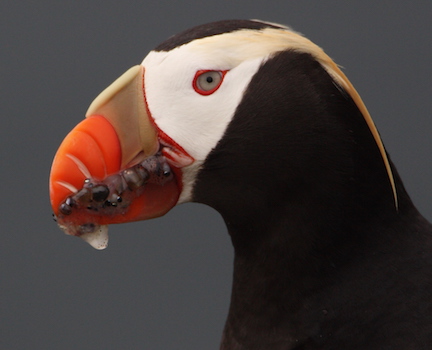
Tufted puffin parent carrying juvenile fish to feed its’ chick; photo by Chris Barger
Breeding: Puffins lay one egg in a burrow or rock crevice on a rugged sea cliff. Both parents share incubation (around 45 days) and chick-rearing duties. When the chick is two months old (or sometimes less) the chick leaves the nest on its own.
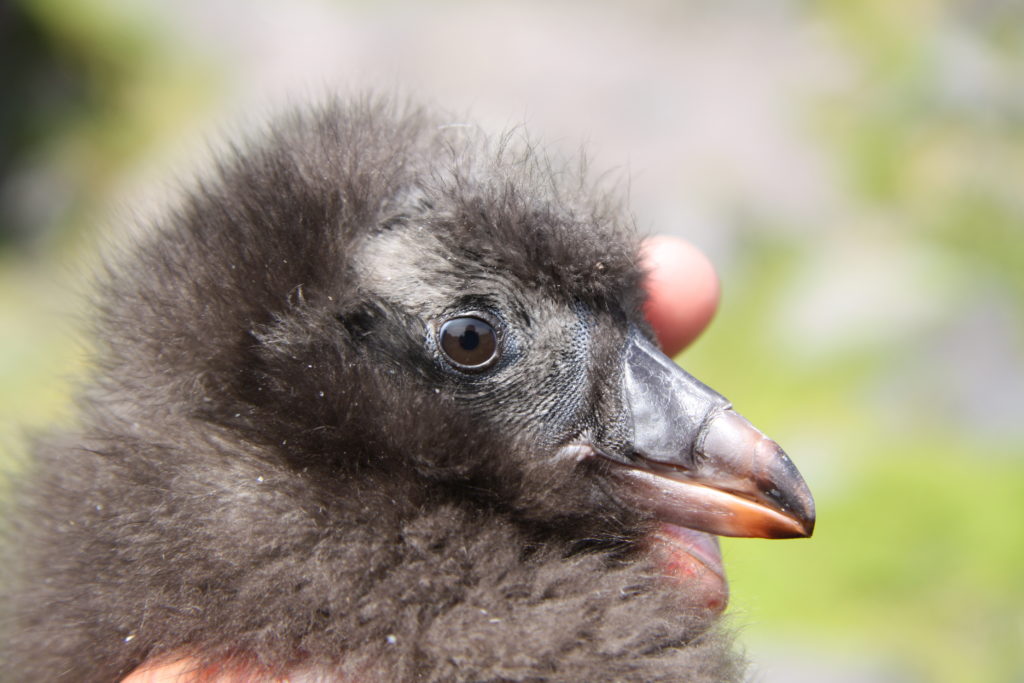
Tufted Puffin chick; photo by Ram Papish
The Future: Puffins are vulnerable to toxic chemicals, oil spills, plastic pollution, getting caught in fishing nets, climate change, and introduced predators such as rats.
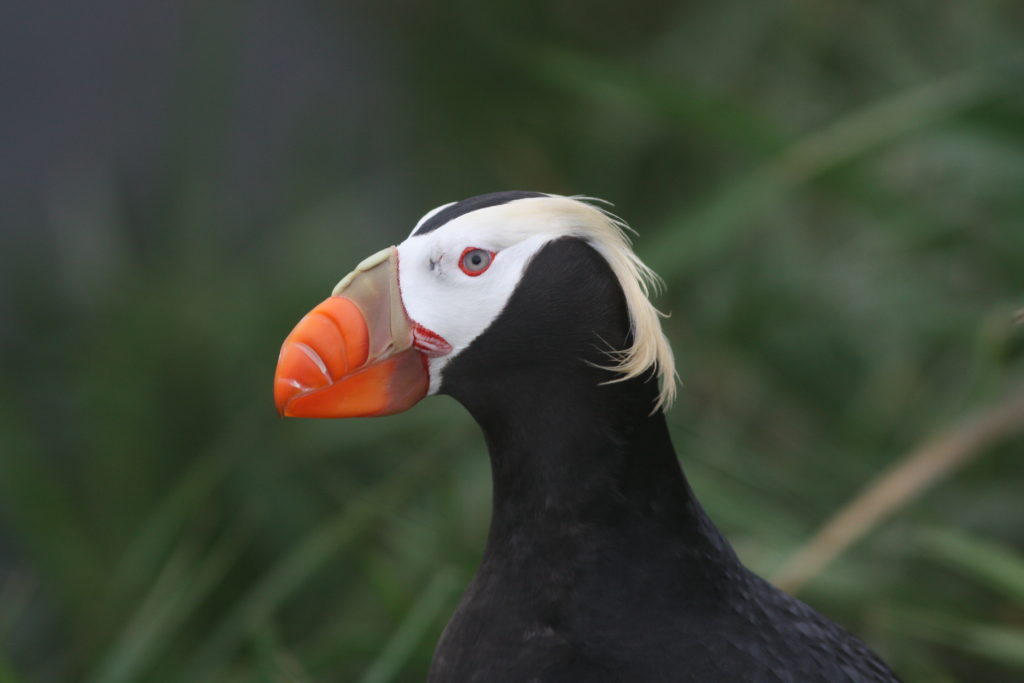
Coolest Seabird? photo by Chris Barger
Did You Know? Puffins shed their colorful bill plates during the winter months.

